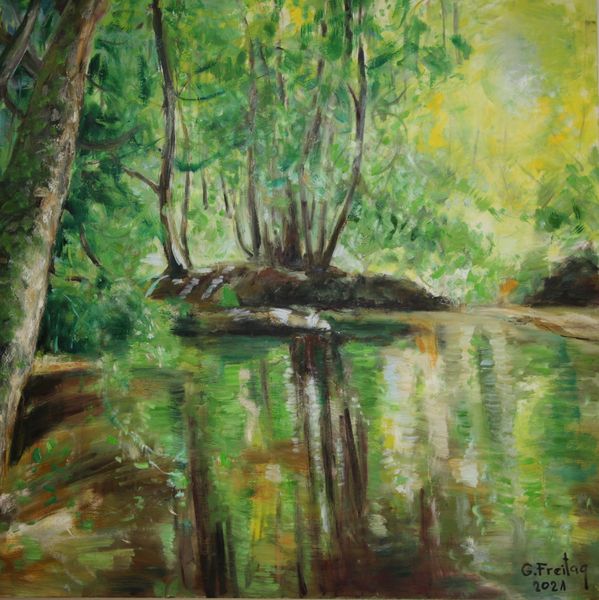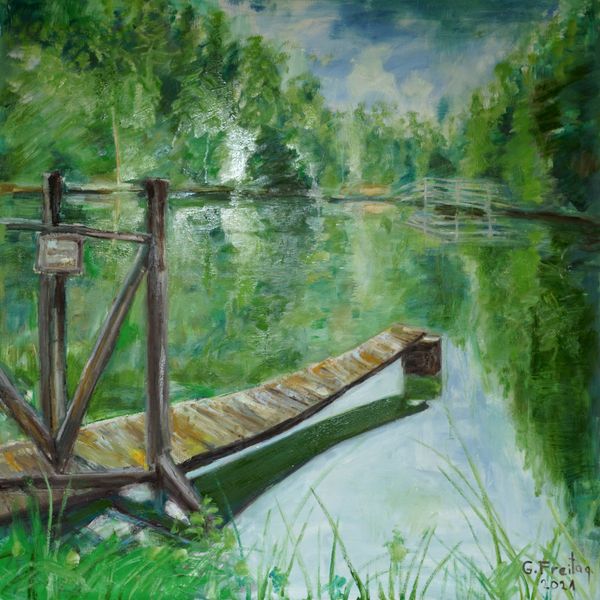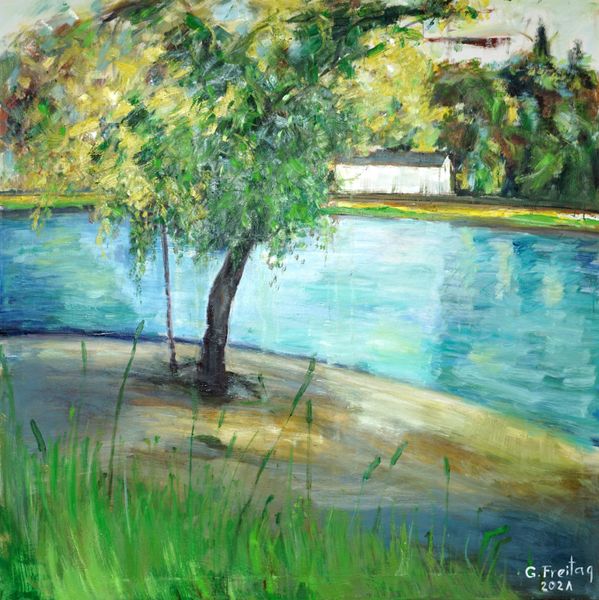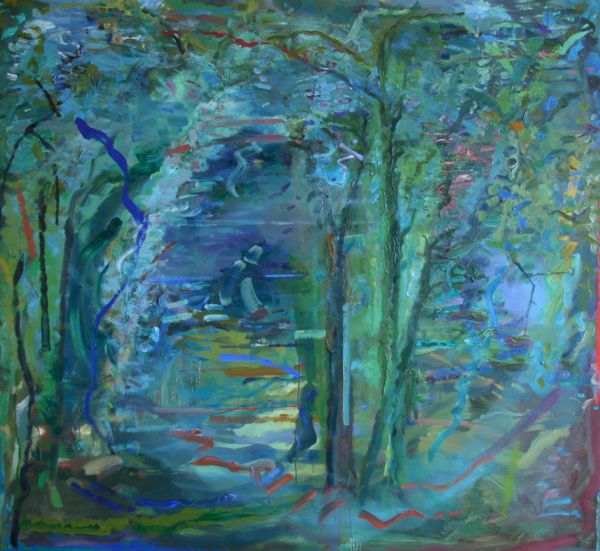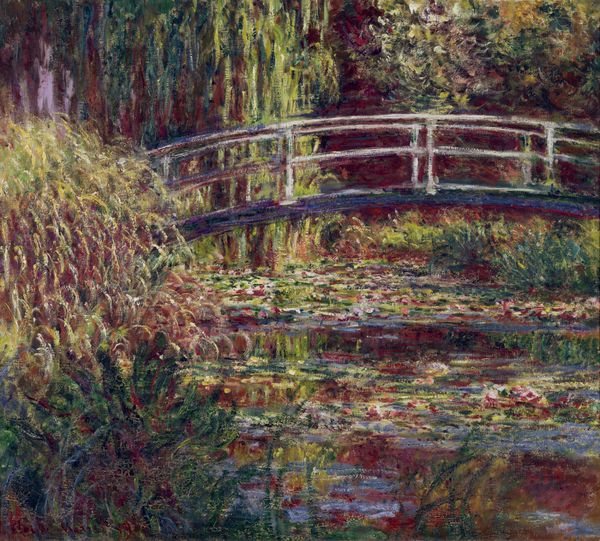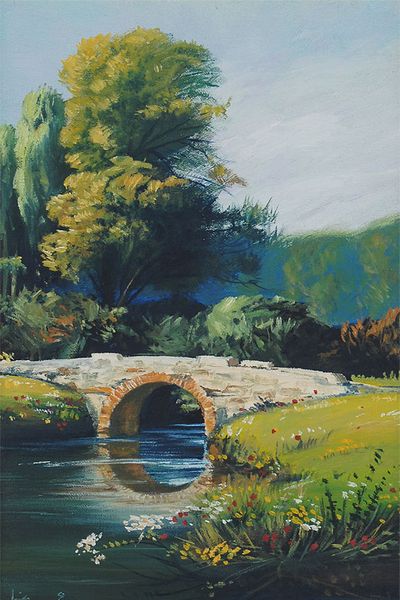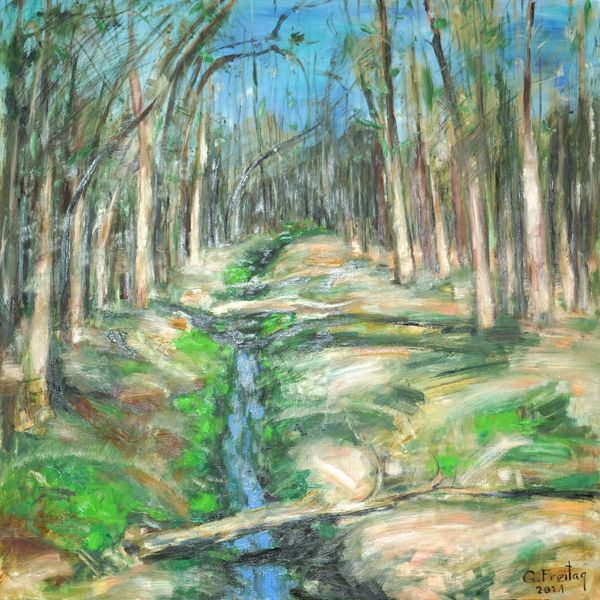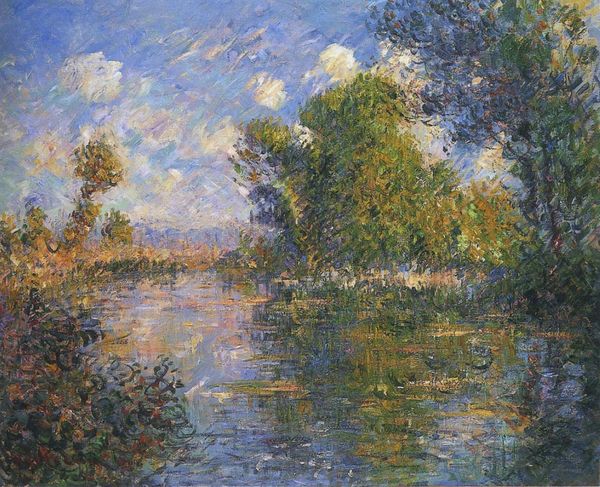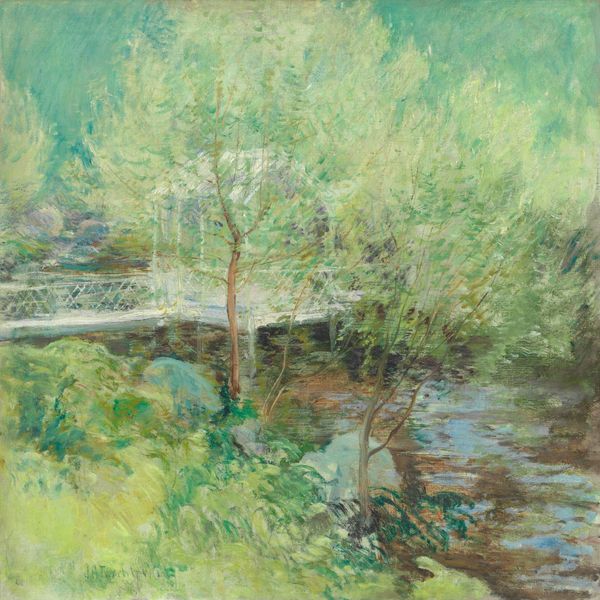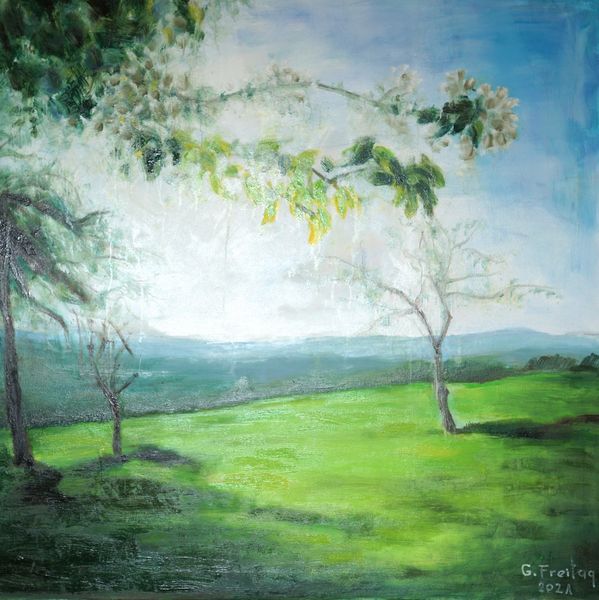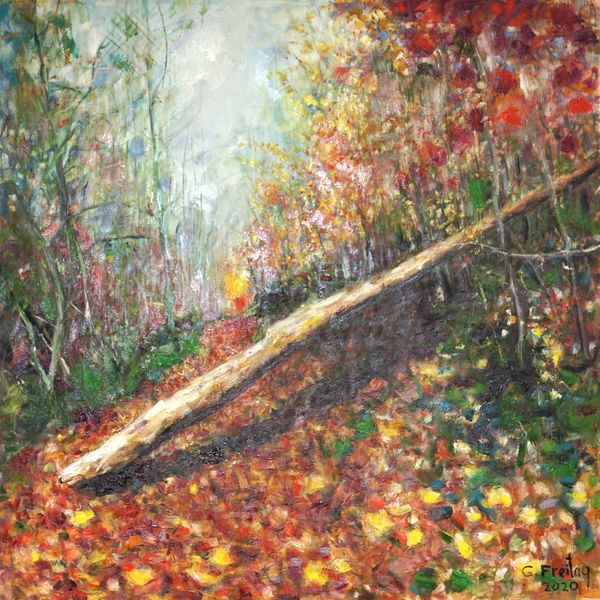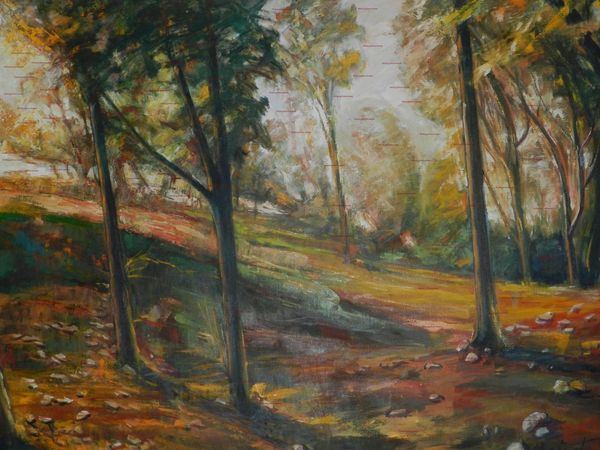
Dimensions: 100 x 80 cm
Copyright: Copyright: Gazmend Freitag
Curator: Gazmend Freitag's "Bridge on the Seugne," created in 2013, immediately brings a sense of calm. Editor: Yes, a really dreamy and idyllic image. It feels classically impressionistic in its depiction of light, and it has such a soft, almost blurred quality. I am intrigued to learn more. Curator: Freitag, known for his plein-air landscapes, captured this scene using acrylic paint and impasto techniques, resulting in a textured surface that amplifies the natural elements. Think about the labor of painting outdoors, battling elements and light. It highlights the artistic process so integral to the work itself. Editor: Right, but there is a constructed reality that we cannot forget. Bridges, symbolically and practically, connect spaces. Who built this bridge? Who is able to use the bridge, and whose access is restricted? This painting offers us an image of placid nature, while also holding complicated implications for social connection and division. Curator: I appreciate your focus on those critical questions! The visible brushstrokes, the very materiality of the paint, contribute to the sense of movement within the scene. Freitag is inviting us to experience the fleeting qualities of light and atmosphere in his depiction. He’s engaging with a lineage of painting in terms of process and studio practices. Editor: And historically, artists like Monet painted water lilies and garden scenes to reflect on social isolation or to contemplate nature as a respite from political strife. So while it is fair to appreciate this painting for its skillful brushwork and material quality, we can ask what political anxieties might have shaped the work. The Seugne River exists in a place. What local tensions are smoothed over by this soothing pastoral painting? Curator: Absolutely. Examining the historical context is crucial for fully understanding the art. Seeing it as simply "beautiful" is an incomplete view. Editor: Exactly. It’s an invitation to reflect on both the pleasure of artistic creation and also to think about our social structures critically. Curator: Well, thank you, as always, for shedding that light! I leave today with a heightened appreciation for how materiality and landscape, while beautiful, should be taken into account, given larger social and historical landscapes. Editor: And I appreciate thinking more carefully about materiality, as well as labor. Thanks for widening my perspective on both visual pleasure and political realities.
Comments
No comments
Be the first to comment and join the conversation on the ultimate creative platform.
